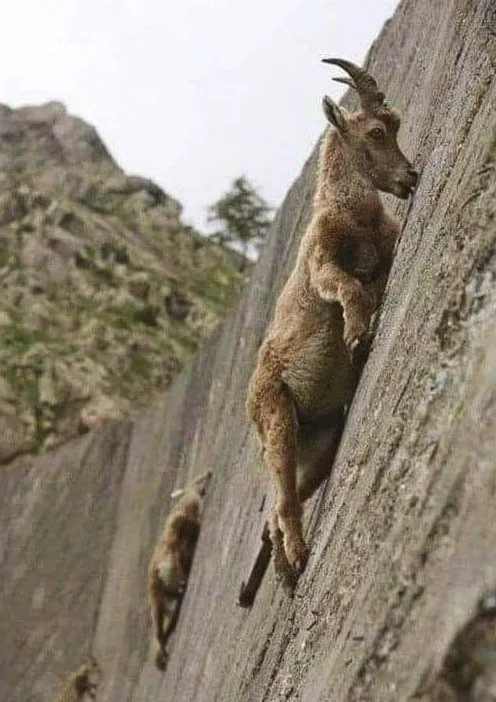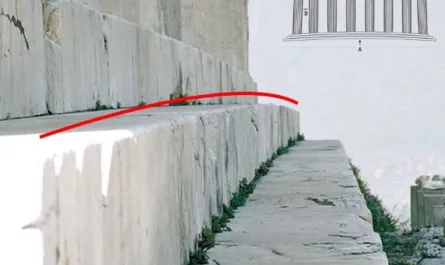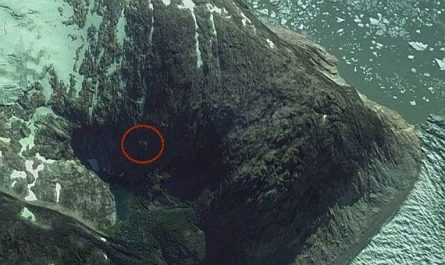From our vantage point here in Phnom Penh, surrounded by the vibrant energy of our city, it’s easy to forget the wild, untamed corners of our planet where nature’s wonders continue to unfold. Today, let’s journey imaginatively to a seemingly impossible landscape in the European Alps, where an extraordinary spectacle plays out on a man-made structure.
Imagine gazing upon a massive concrete wall, stretching skyward at an almost vertical angle. Now, picture an animal, a mountain goat, calmly scaling that sheer surface as if it were a gentle slope. This isn’t a trick of the eye; it’s the captivating reality at the Cingino Dam in Piedmont, Italy, where the magnificent Alpine ibex performs one of nature’s most astounding feats of climbing.

The photograph is simply mesmerizing. An Alpine ibex, its muscular body perfectly poised, clings to the seemingly smooth, vertical face of the dam. Its powerful hindquarters are braced, while its front hooves find purchase on infinitesimal nooks and crannies. Below it, a smaller ibex, perhaps a curious young one, mirrors its parent’s seemingly impossible defiance of gravity. The scale of the dam, rising 160 feet (about 49 meters) high, makes their ascent all the more dramatic.
But how do they do it, and more importantly, why?
The Alpine ibex (Capra ibex) is a true master of its mountainous domain. Native to the rugged, craggy terrains of the European Alps, these wild goats are born with an innate ability to navigate treacherous landscapes. Their secret lies in their unique biological adaptations:
- Split Hooves: Their hooves are cloven, meaning they are split into two halves. This allows each half to move independently, providing a wider base of support and enabling them to grip uneven surfaces with incredible dexterity.
- “Rubber-like Soles”: The bottoms of their hooves have soft, rubbery pads that can conform to the contours of the rock, creating a powerful suction-cup-like effect. Combined with hard, sharp outer edges, these pads give them exceptional traction, even on slick or near-vertical surfaces. They can literally walk where humans fear to tread, bounding effortlessly across rocky ledges and steep cliffs.
So, the “how” is rooted in millions of years of evolution equipping them for their natural environment. But the “why” they tackle a man-made wall that looks like something out of an extreme sports movie is even more fascinating.
Like many herbivores, especially those with a grass-based diet, Alpine ibexes have a strong craving for salt and essential minerals. Their diet alone doesn’t always provide sufficient quantities of these vital nutrients, particularly calcium and magnesium, which are crucial for bone health, nerve function, and overall well-being. This dietary deficiency creates a powerful, instinctual drive to seek out mineral licks.
And this is where the Cingino Dam enters the story. This colossal structure, located about 7 kilometers southwest of Antrona Schieranco, was constructed from stones that happen to be naturally salt-encrusted. Over time, mineral deposits have leached onto its surface. Crucially, the richest and most mineral-laden blocks are often found closer to the top of the dam – a direct result of water runoff and evaporation concentrating the salts at higher elevations.
Driven by this fundamental biological need for salt, these remarkable animals undertake the seemingly impossible. They literally defy gravity, scaling the near-vertical concrete wall to lick the mineral-rich stones. It’s a calculated risk, an incredible display of instinct and adaptation, all for a vital taste of something their bodies crave.
Watching these ibexes at Cingino Dam is more than just observing an animal; it’s witnessing the raw, unyielding power of nature’s drive for survival. It reminds us that creatures are capable of extraordinary feats when compelled by fundamental needs, pushing the boundaries of what we might consider possible.
From the bustling streets of Phnom Penh, where our daily needs are met in more conventional ways, the story of the Cingino Dam ibexes offers a powerful testament to the incredible adaptations found in the animal kingdom – a truly mesmerizing example of life finding a way, even on the steepest, most improbable of paths.





